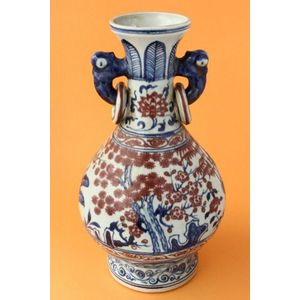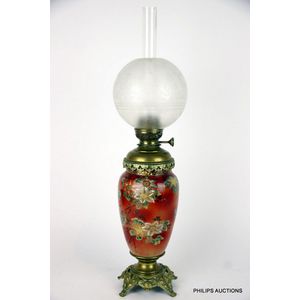French-Japanese Oil Lamp, 19th Century, Hugo Marked Mechanism
You must be a subscriber, and be logged in to view price and dealer details.
Subscribe Now to view actual auction price for this item
When you subscribe, you have the option of setting the currency in which to display prices to $Au, $US, $NZ or Stg.
- Terracotta - Terracotta is lightly fired earthenware, red or reddish-brown in colour, used in ancient times. Fired at higher temperatures terracotta was used in the nineteenth century for decorative vases and similar objects, but rarely for utilitarian goods. Other uses for terracotta include roofing tiles, garden pots and ornaments. Glazed terracotta is known as faience.
- Earthenware - A basic ceramic material that is fired at a low temperature. Earthenware is the basis of almost all ancient, medieval, Middle Eastern and European painted ceramics. After firing, the colour is the colour of the clay when it is dug from the ground: buff, brown and red. It is not waterproof until glazed. Creamware is a type of earthenware covered with a transparent lead glaze. Majolica, faience and delft are also earthenware covered in an opaque white tin glaze.
This item has been included into following indexes:
Visually similar items

Chinese porcelain twin handled vase, of baluster form, twin ring handles, decorated with prunus, bamboo and pine trees, in tones of iron, blue and white, raised on circular exposed foot, height 36 cm

Platinum and diamond 'Victoria' bracelet, Tiffany & Co., designed as a line of forty claw-set brilliant-cut diamonds terminating in a clasp modelled as a flowerhead accented with four marquise-shaped diamonds, the diamonds together weighing approximately 6


Fruitwood and elm dresser 18th century rectangular top with three short drawers below, each draw with brass pulls and shaped back plates. Height 76 cm. Length 170 cm. Depth 41 cm
